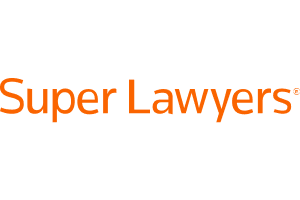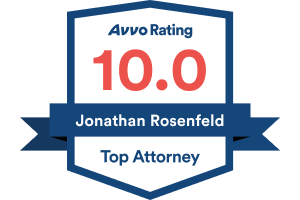- 24/7 Free Consultation: (888) 424-5757 Tap Here To Call Us
Can You Sue Someone For Rear-Ending You in Chicago?

“Can you sue someone for rear-ending you?” has a complicated answer, as it depends on the circumstances of the rear-end collision and the concept of comparative negligence. If a negligent driver has rear-ended you, our rear-end accident lawyers in Chicago can review your case and determine whether you can take legal action. Contact us today for a free consultation about your options.
Statistics of Rear-End Collisions
In 2023, there were 23,785 front-to-rear collisions in Chicago. These may happen due to stop-and-go traffic on busy streets, such as when getting on the Dan Ryan Expressway during rush hour. They may also occur because of sudden stops on highways.
According to traffic reports, rear-end collisions cause approximately 29% of serious injury accidents. A recent study by students at George Mason University found that, statistically, most rear-end collisions happen on straight segments of highway during good weather, especially in the afternoon and evening.
While often not as catastrophic as other car accidents, rear-end collisions can still lead to severe injuries. Common injuries include:
- Neck pain
- Back and spinal cord injuries
- Whiplash and neck injuries
- Broken bones and fractures
- Traumatic brain injuries (TBI)
- Facial injuries from the airbag deploying
These injuries can temporarily make certain activities physically challenging. They can also lead to hefty medical bills, lost wages, and emotional damages. That’s why working with an experienced car accident attorney ensures you receive fair compensation for your damages.
Sadly, some rear-end collisions can result in death. In one example, a driver died near Oak Park after rear-ending a semi-truck stopped on the shoulder of the Eisenhower Expressway. The accident happened around 7:30 pm in February 2024.
Determining Fault in Rear-End Collisions
In most car accident cases, the rear-end driver is generally considered the at-fault party. This liability is based on Illinois traffic laws, which state that drivers must not follow any other vehicle more closely than is reasonable and prudent for current road conditions (625 ILCS §5/11-710).
This is echoed by Chicago Municipal Code §9-40-150, which also mentions that drivers must be aware of their speed and give more following distance when driving faster.
However, this is not an absolute rule, and there can be exceptions where the front driver may be the responsible party. Determining the fault in a rear-end accident is crucial if the victim wants to pursue legal action and recover damages. Some exceptions include:
- Driving with broken brake lights
- Suddenly reversing or backing up
- Stopping in the middle of the road because of a mechanical issue without putting on your hazard lights
- Brake checking, a form of aggressive driving
- Abruptly stopping to make a turn, but then not turning
Even though these situations are less common, they show the importance of a thorough investigation in a rear-end collision accident. Other factors that can affect who was at fault are the weather, driver behavior, road conditions, and vehicle maintenance.
Grounds for a Lawsuit
Just because you want to file a lawsuit for driver negligence doesn’t automatically mean you have grounds to do so. Understanding the legal basis for a rear-end collision lawsuit will ensure it’s worth your time and that you’re successful.
Negligence and Liability
Negligence and liability in rear-end collisions are what make or break a lawsuit. If you want to sue someone for rear-ending you, you need to be able to prove they are liable due to their negligence and that their negligence directly led to your injuries and damages. You can prove or demonstrate negligence by showing that the other driver:
- Caused the accident as a direct result of their breach of duty to maintain a safe following distance;
- Had a duty of care to drive safely;
- Breached their duty through inaction or action, like spending, tailgating, or distracted driving;
- Inflicted injuries on you because of the accident they caused.
You can prove negligence in a personal injury case in several ways. Some things you can do include gathering police reports, witness statements, traffic camera footage, and testimony from experts who can corroborate the negligence. A personal injury attorney can help you navigate this process and help build a strong case.
Types of Damages You Can Recover
When you can successfully prove that the person who rear-ended you was negligent, you might be entitled to certain types of damages:
- Lost Wages: If you have serious injuries that prevent you from working or working in the same capacity as before, you can receive compensation for future wages.
- Medical Expenses: This cost covers any medical treatment you need because of the accident. It can include hospital stays, medications, physical therapy, surgeries, and any future medical care you might need.
- Loss of Enjoyment of Life: You can get compensation if your injuries prevent you from engaging in hobbies and activities you previously enjoyed
- Property Damage: This compensation will usually cover the cost of repairing or replacing your car and other personal property damaged in the rear-end collision.
- Emotional Distress: You can be compensated for anxiety, depression, post-traumatic stress disorder (PTSD), or any other psychological impact that resulted from the accident.
- Pain and Suffering: This can cover the physical and emotional pain the rear-end collision has caused you.
- Loss of Consortium: In severe rear-end accidents, spouses or partners can claim damages for loss of consortium, which is the loss of support and companionship.
For wrongful death, you can also recover damages for burial and funeral expenses, grief, and loss of financial support.
The damages you can potentially obtain will vary depending on the specifics of your case, such as what medical expenses you have and how long it took you to recover before returning to work. The details also affect how much your rear-end collision settlement might be.
Comparative Negligence
Comparative negligence is crucial in determining whether you will be able to pursue compensation. Illinois uses modified comparative negligence for tort law. All parties involved are assigned a degree of blame, and those who are considered less than 50% responsible can pursue legal action. However, their compensation will be reduced by their percentage of blame.
For example, if you’re awarded $100,000 in damages but are 10% at fault, your compensation will be $90,000.
The Legal Process for a Rear-End Accident
To begin with, you should seek medical treatment as soon as possible after any motor vehicle accident. Not only does this ensure you don’t have major injuries, but it also provides evidence if you want to sue for a rear-end collision. Get to the closest hospital, whether that is UI Health or Northwestern Memorial.
If you decide you want to pursue a lawsuit against the person who rear-ended you, it’s a good idea to know what the process will likely look like. Every case is different, but knowing the basics can help you feel more prepared when handling your rear-end accident lawsuit.
Filing a Claim with the Insurance Company
In car accident cases, you must first file a claim with the at-fault driver’s insurance company to seek compensation for the accident. Here’s what the process generally looks like:
- Informing the insurance adjuster of the accident;
- Providing details about the rear-end collision and your injuries ;
- Submitting any relevant documentation (police report, medical records, etc.);
- Cooperating with the company throughout the claim investigation.
Negotiating a Settlement
After the insurance company reviews your personal injury claim, it might offer you a settlement. A skilled attorney who understands car accidents might be helpful, especially at this stage. They can help by:
- Assessing the fairness and amount of the initial offer;
- Gathering and presenting extra evidence that supports your claim;
- Negotiating with the insurance provider to secure a settlement that covers your damages.
Most cases settle out of court, as it’s often in both parties’ interests to avoid a costly trial.
Filing a Lawsuit
In most rear-end accidents, settlements can be reached outside of court. However, your attorney might advise you to file a lawsuit if negotiations stall or the offer seems unfair. This step includes:
- Filing a formal complaint with the right court;
- Serving the at-fault driver with a copy of the complaint;
- Participating in the discovery process, where both sides exchange evidence and information;
- Going through pretrial motions and hearings.
Keep in mind that just because you file a lawsuit doesn’t automatically mean your case will go to trial. Most cases can be settled outside of the courtroom.
Trial and Verdict
If your case goes to trial, both sides will present their arguments, witnesses, and evidence. The judge or jury will give the final verdict. The trial process looks like this:
- Opening statements from both sides
- Presentation of witnesses and evidence
- Cross-examination of witnesses
- Closing arguments from both sides
- Jury deliberation if your case goes before a jury
- Verdict and judgment
When you receive a favorable verdict, the court will issue a judgment, which includes the damages determined during the trial. It’s important to know that the defendant (the at-fault driver) and claimant (plaintiff) can appeal the decision if they are unsatisfied with the outcome.
Why Consult a Personal Injury Lawyer
Rear-end collisions can be complex. Hiring a lawyer helps protect your interests and prove liability. Here’s how an attorney can assist.
Assessing Your Rear-End Collision Case
An experienced personal injury lawyer will evaluate your case so you can understand:
- The strength of your claim;
- The potential weaknesses or challenges in your case;
- The possible liability of all parties involved;
- The types and amounts of damages you might be able to receive;
- The likelihood of your case being successful either in settlement negotiations or at trial.
They’ll help gather evidence to establish liability, including crash reports, medical documentation, and eyewitness statements. They can also find cell phone records or surveillance to prove distracted driving and other infractions. This way, you will not be blamed for more than your fair share of responsibility in the rear-end collision, which makes you more likely to receive a fair settlement.
Negotiating with Insurance Companies
Insurance companies are out to settle for the lowest amount possible, so having legal representation is important. A lawyer can help with:
- Handling all communications with the other driver’s insurance company;
- Identifying and countering any unfair or low settlement offers;
- Presenting evidence that supports your claim;
- Strategically negotiating until you reach a fair settlement based on your damages.
Representing You in Court
If your case can’t be settled out of court, your attorney will have the skills to represent you in court by:
- Developing a solid trial strategy;
- Presenting your case to showcase the scope of the accident to the judge or jury;
- Cross-examining witnesses;
- Challenging the defense’s arguments;
- Following all legal procedures and deadlines.
Statute of Limitations
The statute of limitations for car accidents is the deadline to file a lawsuit or claim. In Illinois, you generally have two years to file suit after a car accident (735 ILCS §5/13-202). However, some exceptions may apply to rear-end collisions.
One of these is if the defendant is a non-Illinois resident and does not return to the state. In these cases, the statute of limitations may be tolled, or paused, until they return.
Consult a Rear-End Collision Lawyer Near You!

If you’ve been injured and want to sue for a rear-end collision accident, you need a car accident lawyer in your corner. Rosenfeld Injury Lawyers has the experience to help you through the legal process and reach a substantial settlement reflecting your injuries.
With over 100 years of combined legal experience, we have a 98% success rate and have recovered millions in damages for our clients. We work on a contingency fee basis, meaning you owe us no legal fees unless we are able to win your case.
Take the first step to pursuing legal action by contacting a Chicago car accident attorney at (888)-424-5757 or filling out our contact form to book a free consultation.
All content undergoes thorough legal review by experienced attorneys, including Jonathan Rosenfeld. With 25 years of experience in personal injury law and over 100 years of combined legal expertise within our team, we ensure that every article is legally accurate, compliant, and reflects current legal standards.







